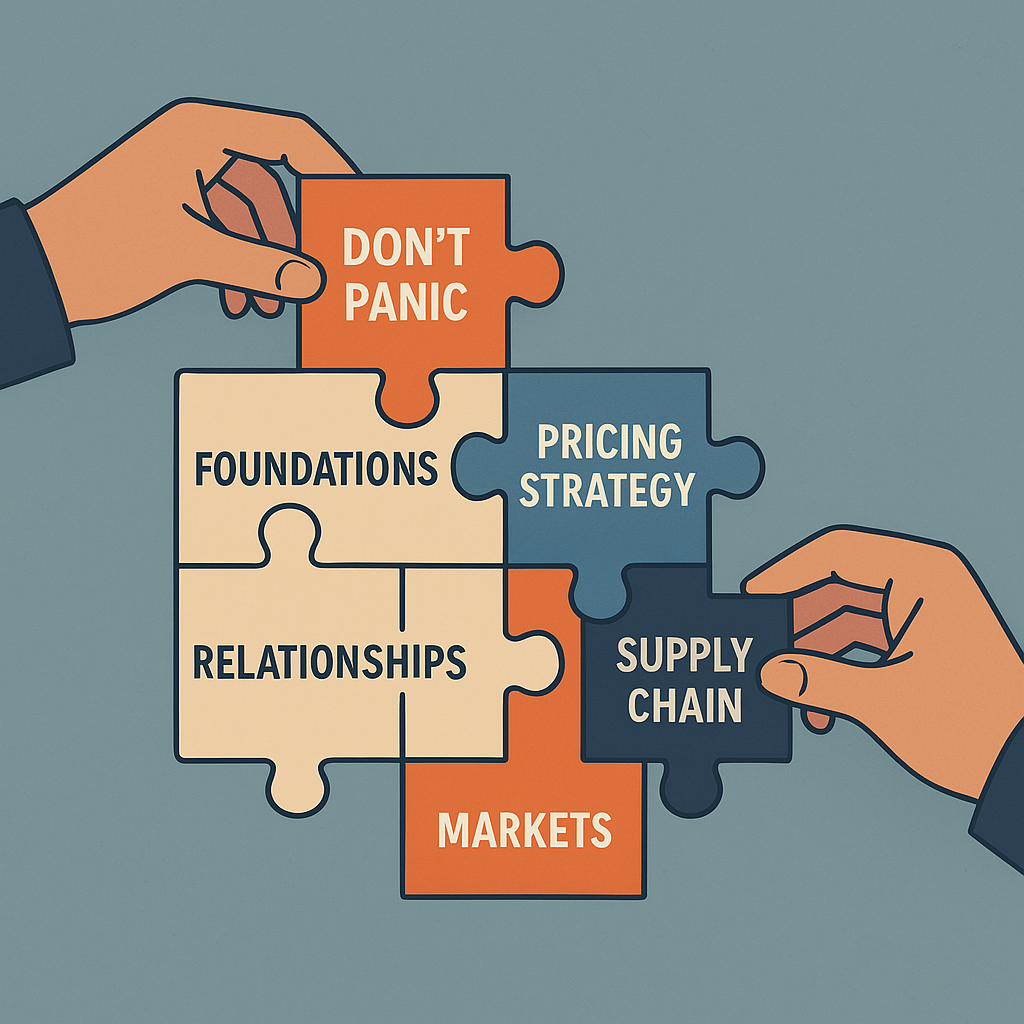Tariffs & Consumer Brands: A Calm, Strategic Playbook for CPG Founders
If you’re building a beauty, wellness, or lifestyle brand, chances are you’ve felt the ripple effects of shifting tariffs—higher landed costs, unpredictable margins, and complicated cross-border logistics. But reacting emotionally won’t solve it.
The most successful CPG startups I’ve worked with don’t panic—they plan. Here’s how:
1. Don’t Panic
Whether you’re scaling a skincare line or launching a wellness device, reacting on emotion leads to costly mistakes. Take a breath. Assess the data. Then act with intention.
2. Foundations: Know Your Unit Economics
Are tariffs already baked into your blended margin? Many CPG founders treat duties as afterthoughts—until they start cutting into contribution margin. If you’re importing packaging, actives, or full products, clarity on landed cost per SKU is non-negotiable.
3. Pricing Strategy: Flex Your Mix
Your pricing can’t be static. How are you distributing cost across markets? Can you rebalance pricing in high-tariff regions while staying competitive in others? With COGS often impacted by things like secondary packaging or ingredient origin, smart brands build flexibility into pricing early.
4. Relationships: Have Open Conversations with Suppliers
Manufacturers often blend development fees—like mold tooling or custom formulation—into your product cost, which then inflates your tariff liability. Ask if these can be separated out and invoiced independently. Small change, big difference. And talk through other strategies like altering origin, packaging, or production sequencing to reduce exposure.
5. Supply Chain: Rethink Fulfillment Strategy
If the U.S. becomes too costly, can you redirect product to other regions? Can your 3PL or distributor help reduce duties via strategic routing? CPG brands shipping globally—especially DTC—are getting creative with fulfillment to stay nimble and compliant.
6. Markets: Expand Where It Makes Sense
For UK-based or international brands, U.S. tariffs may not justify aggressive growth. Focus instead on high-potential markets with friendlier trade terms—whether that’s the EU, Middle East, or Southeast Asia. A diversified sales footprint softens the blow.
7. Communicate: Keep Your Stakeholders Informed
Your investors and advisors want to help—but only if you bring them into the loop. Proactive, informed conversations can surface solutions you didn’t see on your own. Silence isn’t a strategy.
Beauty, wellness, and lifestyle brands are built on margins, perception, and speed. Tariffs may not be in your control—but how you respond absolutely is.
How are you navigating tariff uncertainty in your category? Let’s share ideas.
#CPGFounders #BeautyIndustry #WellnessStartups #GlobalTrade #TariffStrategy #SupplyChainManagement #StartupLeadership

